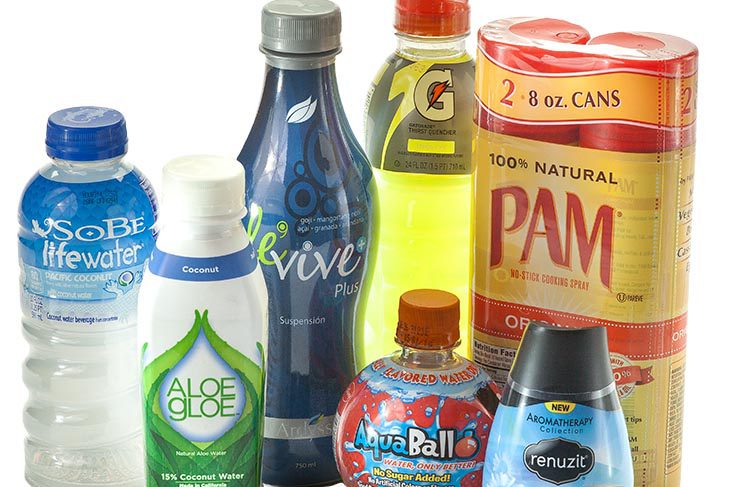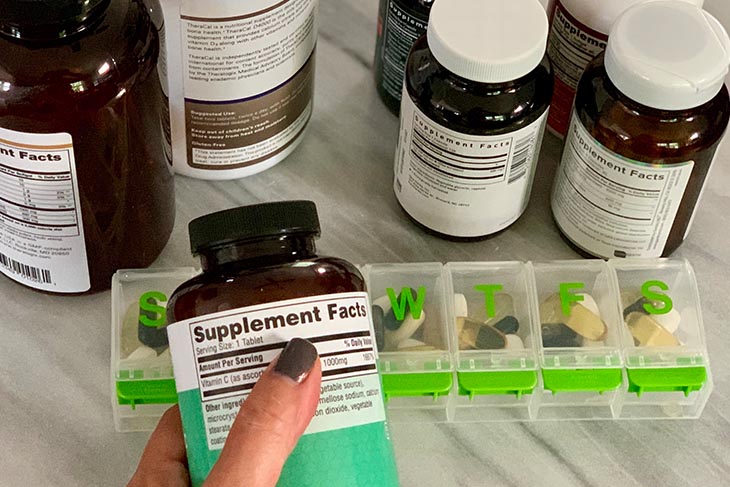
Shrink Sleeve Labels VS Pressure-Sensitive Labels
When looking to add a label to your product, there are two common types to choose from. But how do you know which one is the best for your product? We will be comparing the two most common types of labels—shrink sleeve labels and pressure-sensitive labels.
Shrink Sleeve Labels
A common label used by manufacturers is a shrink sleeve label. These labels are printed on a shrinkable film and then slipped over the container manually or by using an automated shrink sleeve label applicator, like AFM’s LX-150. The LX-150 is ideal for low to moderate production rates.
Different film types, like PVC, PET-G, PLA, or OPS, can be used for shrink sleeve labels. These film types vary depending on the application and the desired finished results. Once the sleeve is on the desired container, it is then shrunk around the container manually with a heat gun or automatically using a heat tunnel, like AFM’s WSN-GEN S steam heat tunnel. There are several different types of shrink sleeve labels: full-body, full-body with tamper-evident cap, middle sleeve, and multi-pack leaving almost endless possibilities when creating a shrink sleeve label. Additionally, shrink sleeve labels can be applied to a number of container shapes, like round, oval, or irregular, while still maintaining the design and creating a sleek finish.
Manufacturers use shrink sleeve labels to create a top to bottom, 360-degree design that can include full-color graphics, text, and even unique finishes. These labels are digitally printed instead of printing plates, making them economical for short runs with more vibrant and eye-catching colors.


Pressure-Sensitive Labels
TPressure-sensitive labels, or PSLs, are another way to add a label to your product. These labels are very similar to a sticker, requiring pressure to get the label to stick to the product. These labels are made up of 5 parts:
- Liner—this is the backing material, which is made up of paper or plastic film. This layer is the base for the other four layers.
- Release Coat—this is the coating applied to the surface of the liner to oppose the adhesive. This coat allows the adhesive layer to peel away from the liner easily.
- Adhesive—this is what sticks the label to a container or package.
- Face Stock—this is what the consumer will see. This label material can be made of foil, laminate, plastic film, paper, and more.
- Topcoat—this laminate coat protects the label and gives it a finished appearance.
Shrink Sleeve Labels vs. Pressure-Sensitive Labeling
Pressure-sensitive labels appeal to manufacturers because they do not require water, heat, or solvent, making the application straightforward. Due to the easy application, pressure-sensitive labels are versatile and can be applied to many products and substrates.
It is essential to know which environment your product will be in when it comes to the pressure-sensitive label. A label meant for use in a hot shower wouldn’t be used in a freezer in your home. When you are looking to use these labels, consider chemical exposure, extremely hot or cold temperatures, condensation, humidity, and other environmental hazards.
Shrink sleeve, and pressure-sensitive labels are a great way to market your product. It is important to factor in your manufacturing environment, container shape, desired container coverage, and your product’s finished look when selecting your label application method.
Do you want to learn more about shrink sleeve consumables and automated label application options? Visit our Products tab or give our knowledgeable sales team a call!

